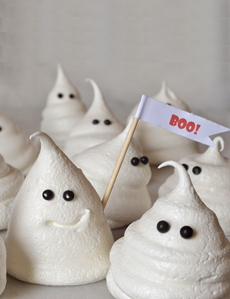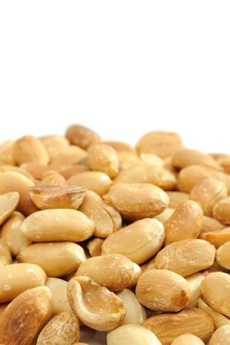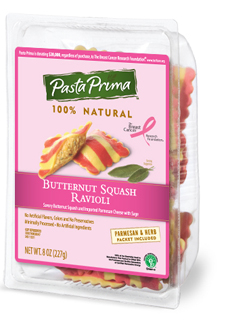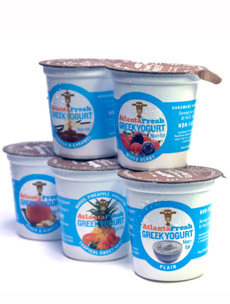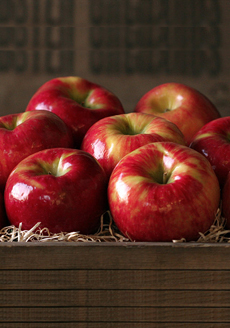Preparation
1. PREHEAT the oven to 225°F. (Always use an oven thermometer—you can’t trust the calibration, even on the finest oven.) Prepare two cookie sheets by lining with parchment paper.
2. BEAT the egg whites in the bowl of a stand mixer fitted with the whisk attachment, at medium-high speed just until frothy (about a minute).
3. ADD the salt and cream of tartar. Continue beating and very slowly add the sugar. Continue beating until the whites have become very thick (although not dry) and glossy. The whites should hold their peak when the beater is pulled out of the bowl.
4. ADD the vanilla extract, and continue beating for another fifteen or twenty seconds, just until it has been absorbed into the meringue.
5. TRANSFER the meringue to a large piping bag fitted with a plain, wide tip (for example, Ateco #808). Pipe ghost shapes onto the lined cookie sheets. Using a pair of tweezers, set the dragée “eyes” into the ghosts. This is the painstaking part of recipe, so be patient and have fun. You can use the back of the tweezers or other implement to draw an optional smile. (We used an straightened-out paper clip.)
6. BAKE for fifteen minutes, checking frequently to make sure the meringues do not brown. After fifteen minutes, turn the oven off and leave the meringues inside for 3-4 hours to dry.
Then, WATCH those ghosts disappear!
*Dragée, pronounced drah-ZHAY in French, refers to various types of hard, sugar-based confections. Jordan almonds, for example, are called dragées in France. In the U.S., the term most often refers to a tiny ball of colored sugar, commonly 3-4 millimeters in diameter, used to decorate cookies and cakes. In comparison, the dragées on nonpareils candies are 2 millimeters in diameter. The word derives from the Greek tragêmata, meaning sweets or treats. According to Wikipedia, the dragée was originally a spiced lump of sugar eaten after meals as a digestive.
|
